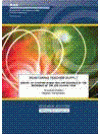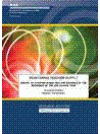The 2005 Monitoring Teacher Supply report provides the Ministry with a snapshot of the number of entitlement staffing vacancies and re-advertised vacancies in schools at the start of Term 1, how these vacancies are being covered and, in the case of secondary schools, in what subject areas pressure points are occurring.
Key Results
Since 1997 the Research Division of the Ministry of Education has undertaken a Teacher Vacancy Survey of all state and state integrated schools at the beginning of each school year to monitor the staffing situation in New Zealand schools.
This one-page survey provides the Ministry with a snapshot of the number of entitlement staffing vacancies and re-advertised vacancies in schools at the start of Term 1, how these vacancies are being covered and, in the case of secondary schools, in what subject areas pressure points are occurring.
While school vacancies are also monitored through the March and July roll returns and through the advertisements in the Education Gazette this survey provides the Ministry with valuable vacancy information early in the school year.
The 2005 survey was completed by 89 percent of all schools (91% of primary schools and 80% of secondary schools). This is a lower response rate than was achieved for the 2004 survey which was completed by 95 percent of all schools.
The 2005 results show that while vacancies in primary schools remained at a similar level as in 2004, in secondary schools vacancies continued to decline. Thirty-one percent of secondary schools had vacancies at the beginning of the school year compared with 39 percent at the same time in 2004. The vacancies within these schools represented 1.0 percent of all entitlement positions in secondary schools, down from 1.4 percent in 2004.
The number of re-advertised positions is considered to be an indication of “hard-to-staff” positions. Compared with 2004, in 2005 more primary and fewer secondary schools appeared to be having difficulty in filling their vacancies. In 2005, 2.9 percent of all primary schools had re-advertised positions (compared with 1.8% in 2004) and 16 percent of all secondary schools had re-advertised positions (compared with 23% in 2004). In 2005, 29 percent of all vacancies and 0.3 percent of all entitlement positions in primary schools were re-advertised (compared with 21% of all vacancies and 0.2% of all entitlement positions in 2004). In secondary schools, 47 percent of all vacancies and 0.5 percent of all entitlement positions were re-advertised in 2005 (compared with 51% of all vacancies and 0.7 percent of all entitlement positions in 2004).
Further results from the survey in 2005 indicated that:
- The Invercargill Ministry of Education local office area recorded the highest proportion of both vacancies and re-advertised positions. In 2005, 2.8 percent of entitlement positions in that office area were vacant, and 1.7 percent had been re-advertised (compared with 1.3% vacancies and 0.5% re-advertised in 2004 respectively).
- The proportion of vacancies and re-advertised vacancies were greater in schools with larger concentrations of Māori students and in schools in lower socio-economic areas (deciles 1-3 schools).
- A smaller proportion of lower decile schools (deciles 1-3) reported experiencing vacancies in 2005 (15.5%) than was the case in 2004 (17.5%). A similar proportion of lower decile schools reported re-advertised vacancies in 2005 as in 2004.
- The use of trained relief staff (employed for 10 school weeks or less) was the most common measure used to cover vacancies in both primary (62.1% of all primary vacancies were covered in this way) and secondary (51.5%) schools. This measure was used to a greater extent in primary schools and to a relatively lesser extent by secondary schools in 2005 than in 2004.
- The subject areas most sought after in secondary schools were technology (15.5% of all entitlement vacancies), mathematics (13.9%), English (9.2%), Māori (8.1%) and sciences (7.5%).
- There were 1,116 overseas teachers (who had taught for the first time in New Zealand in 2003, 2004, or 2005) teaching here at the beginning of 2005. Nearly three-quarters (74.4%) of these teachers were teaching in secondary schools.
- In 2005, the total number of first year beginning teachers decreased slightly in both primary and secondary schools when compared with the previous year.
- As found in previous surveys, beginning teachers were more likely to be teaching in lower decile schools (deciles 1-3) and in schools with larger concentrations of Māori students.
- The highest proportions of beginning teachers were employed in the Invercargill (6.2%); Wellington (5.7%), Auckland South (5.5%), and Wanganui (5.4%) local office areas.
- The 2005 data suggest that secondary schools are facing less difficulty in staffing their schools than they did in 2004. However, secondary student numbers are still expected to continue to grow in the short term.
- This implies that the demand for secondary teachers will continue to remain high over the next couple of years.
Since 1996, the Ministry of Education has introduced a range of initiatives to increase the supply of teachers. These initiatives include scholarships, loan support, allowances for priority subject areas, retraining for former secondary teachers, returning to teaching allowances, national relocation grants to encourage teachers to take up hard to staff positions, conversion courses to assist primary teachers with degree qualifications to teach in secondary schools, and international relocation grants. The Ministry of Education will continue to closely monitor the teacher supply situation in New Zealand and the outcomes of the initiatives it has in place to increase the supply of secondary teachers.


